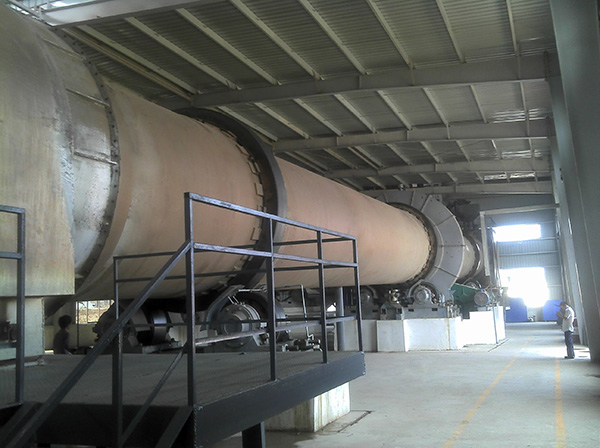Rotary kiln is composed of gas flow, fuel combustion, heat transfer and material movement. The rotary kiln is how the fuel can be fully burned, and the heat of the fuel combustion can be effectively transferred to the material. After the material receives the heat, a series of physical and chemical changes occur, and finally the finished clinker is formed.

Welding, also known as jointing or soldering, is a manufacturing process and technology for joining metals or other thermoplastic materials such as plastics by heating, high temperature or high pressure.
There are many energy sources for modern welding, including gas flame, electric arc, laser, electron beam, friction and ultrasonic. In addition to being used in factories, welding can also be carried out in a variety of environments, such as the field, underwater and space. No matter where it is, welding may bring danger to the operator, so appropriate protective measures must be taken when welding. The possible harm caused by welding to the human body includes burns, electric shocks, visual impairment, inhalation of toxic gases, and excessive ultraviolet radiation.
First, Rotary kiln welding process
1. Spot welding: The welding points are distributed on 8-12 equal points of the interface circumference, the length of the welding point is 150-200mm, and the height of the welding seam is about 5mm. Spot welding should be done on the blunt side of the groove or on the side of the small groove. For example, if a single V groove is opened on the outside of the cylinder, spot welding shall be carried out in the cylinder; when X groove is used, the large groove is on the cylinder, the inside of the body should be spot welded on the outside; the large groove on the outside of the cylinder should be welded in the kiln. Check the weld after spot welding. If there is any defect, remove it and re-weld.
2. If the welding adopts X groove and the large groove is on the outside of the cylinder, spot welding should be carried out in the kiln cylinder. The distribution, length and sequence of the welding points are the same as above. Welding starts from the outside of the kiln shell, and the inner layer is made with a Φ4mm electrode, and the next 5 layers are welded with a Φ5-6mm electrode.
3. The welding adopts flat welding, which is easy to grasp, and the appearance quality is also good. Every 0.5-1m of welding, rotate the kiln body once, and then continue welding. When the circumference of the cylinder is 1/4 of the circumference of the welding, rotate the cylinder 180°, and then continue welding. After all the external welding is completed, the inside of the cylinder can be welded. Only then can all the paired bolts, lap plates, etc be removed and all cleaned.
4. Clean the roots: Use carbon arc gouging to remove spot welding seams and coating slags inside the cylinder, and then perform welding.

Second, Welding quality inspection and requirements
1. Visual inspection
Whether the welding seam is smooth; whether there are convex and concave phenomena at the contact point; whether the actual size of the welding seam meets the design requirements; whether there are arc pits, biting meat, pores, and slag inclusion on the surface of the welding seam. If they occur, they should be removed and repaired. There should be no cracks in the heat-sensitive area, the biting depth should not be greater than 0.5mm, the continuous length of the undercut should not be greater than 100mm, and the total length should not be greater than 10% of the weld length. Welding seam height: the outside of the cylinder is not more than 3mm, the internal firing zone is not more than 0.5mm, and the other areas are not more than 1.5mm, and the welding seam's ** point shall not be lower than the surface of the cylinder.
2. Flaw detection and inspection of welds
① When ultrasonic flaw detection is used, the welds should be inspected one by one. The length of the weld is 25% of the length of the weld, and it is qualified if it reaches the second-level standard in JB1152. If there are any doubts during the ultrasonic inspection, radiographs must be used for inspection.
② When X-ray inspection is used, each weld should also be inspected, and its length is 15% of the length of the weld. The intersection of welds must be inspected mainly. It is qualified when it meets the third-level standard in GB3323.
③ When the inspection is unqualified, the inspection length of the weld should be doubled. If it is still unqualified, the weld should be * inspected.
④ The number of repairs to any part of the weld shall not exceed twice.
Henan Zhengzhou Mining Machinery Co.,Ltd has been committed to the research of rotary kiln technology for many years, has accumulated a lot of experience in rotary kiln equipment, has mature production concepts, and a professional technical research and development team, which can create high-quality rotary kiln equipment for you. Warmly welcome People from all walks of life come to visit our factory!





















